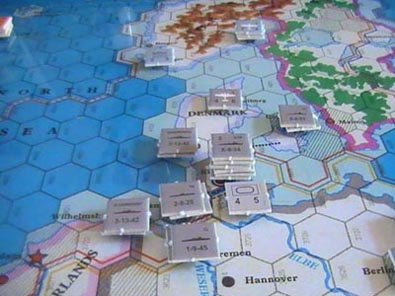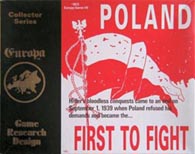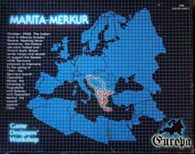The
Europa Series
The
Europa series of games published by GRW and GRD are one of the most signifcant
series in the history of wargaming, covering, as it attempted to do - the entire
Second Word War, where it was envisaged that the whole campaign could one day
be played out in Grand Europa. This was never acheived, however, the games
themselves are both big enough and significant enough to attract more than two
generations of wargamers over the last 35 years. The main releases of the games,
though not the first editions necessarily, are as follows:
| Fire
in the East (Russia) | Europa
I | 1984 | | Scorched
Earth (Russia) | Europa
II | 1987 | | Marita
Merkur (Balkan Front) | Europa
III | 1979 | | Storm
Over Scandanavia | Europa
IV | 1998 | | Their
Finest Hour (Battle of Britain) | Europa
V | 1976 | | Western
Desert | Europa
VI | 1982 | | First
to Fight (Poland) | Europa
VII | 1991 | | The
Fall of France | Europa
VIII | 1981 | | The
Near East | Europa
IX | 1983 | | For
Whom the Bell Tolls (Spain) | Europa
X | 1995 | | Torch
(North Africa) | Europa
XI | 1985 | | Second
Front (Normandy) | Europa
XII | 1994 | | The
Urals (Russia) | Europa
XIII | 1989 | | A
Winter War (Finland) | Europa
XIV | 1992 |
'Western
Desert', 'The Near East' and 'Torch' were later combined into one game called
'War in the Desert', and published in 1995 by GRD. 'Scorched Earth' and 'The Urals'
cannot be played without 'Fire in the East' as they are extensions. 'For Whom
the Bell Tolls' covers the Spanish Civil War.
By far the biggest individual
game is 'Second Front' which contains four maps (34x22) and 5800 counters. The
largest game map-wise is 'Fire in the East' with six map areas plus those added
by 'Scorched Earth' and 'The Urals'.
More information about the history
of the games can be found at Wikipedia
and also BoardGameGeek.
|




